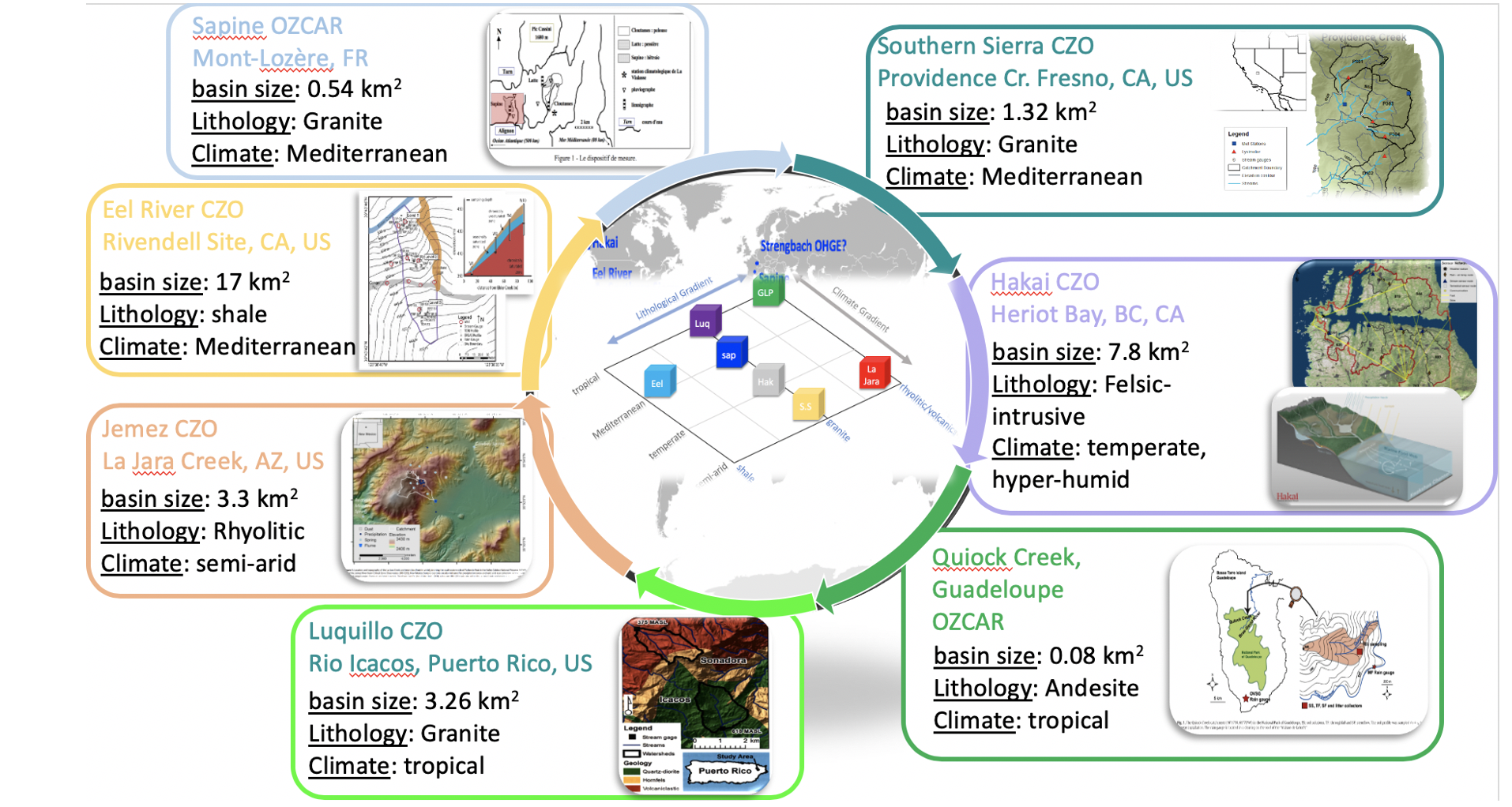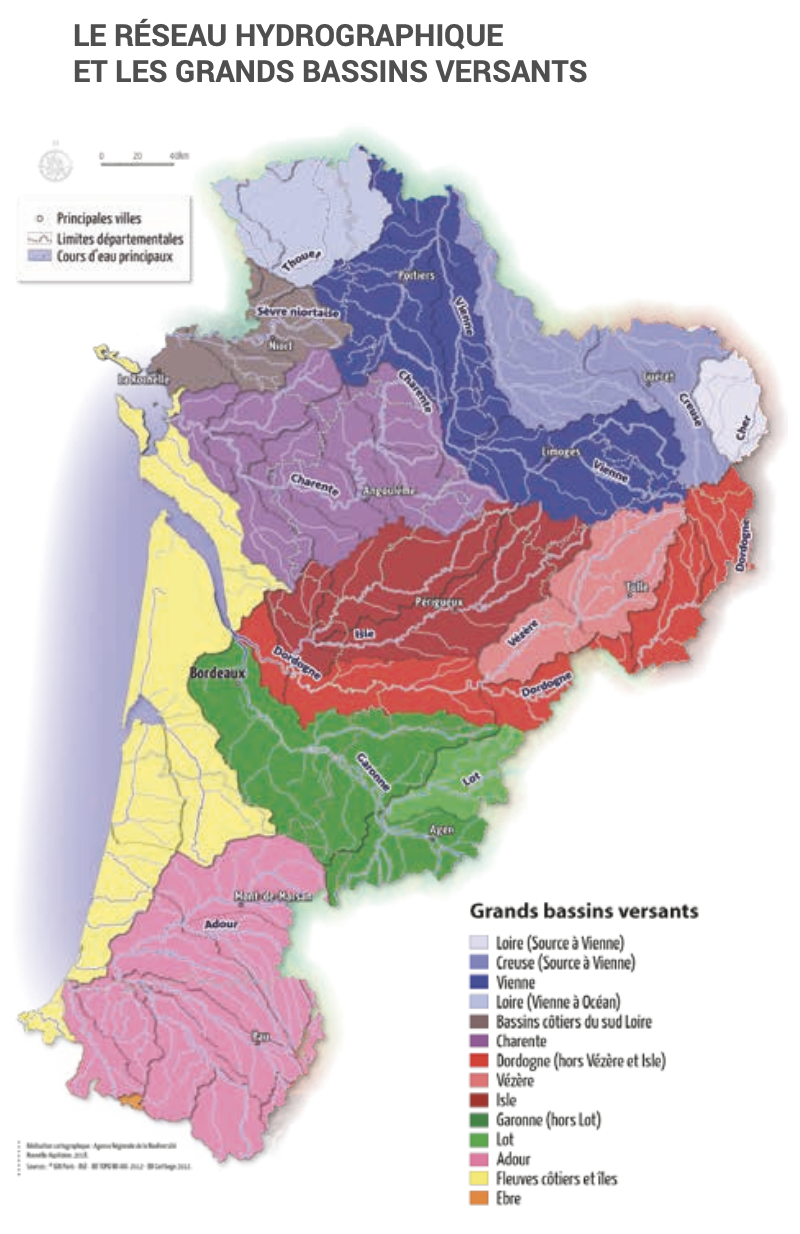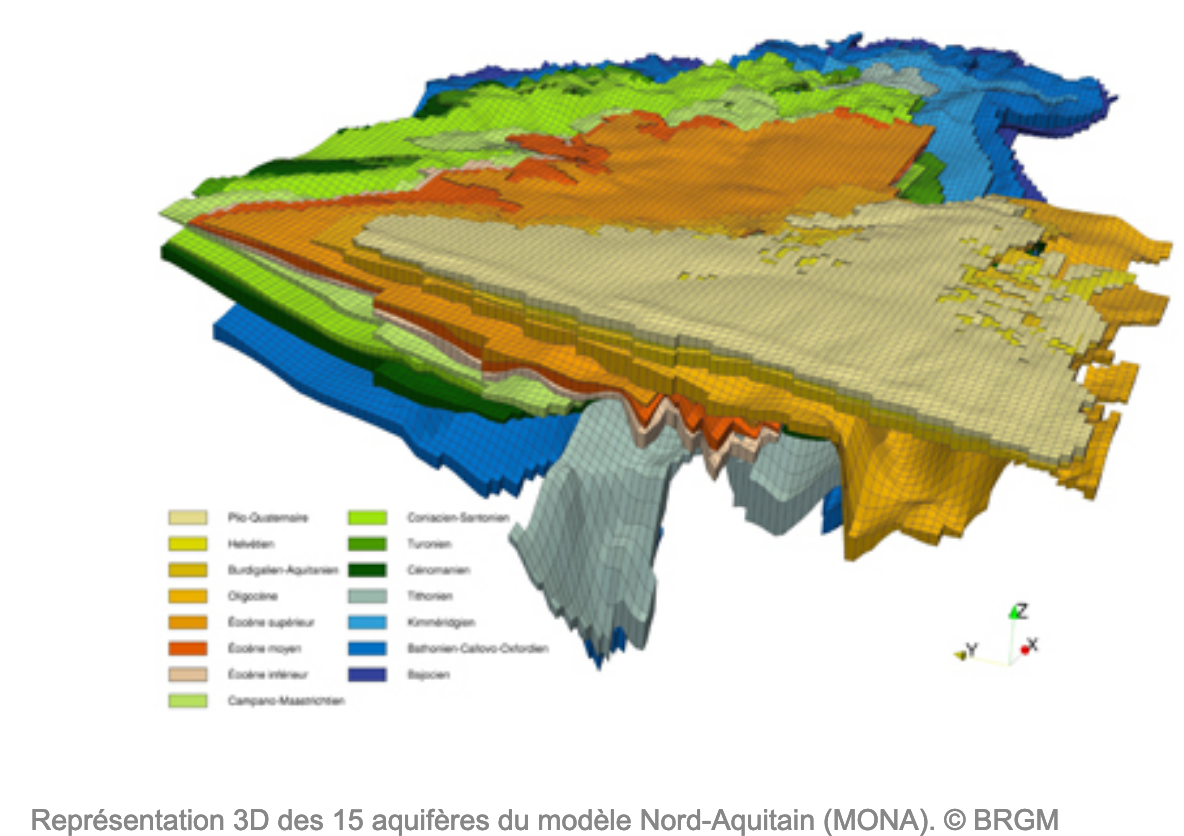overview
My research reflects a synergy between biogeochemistry, hydrology, and geomorphology and extends across various spatiotemporal scales from the mineral surface–water interface all the way to regional scale river basins and across environments (headwaters to coastal zones). I believe in a collaborative, interdisciplinary approach and seek to develop projects that go beyond my expertise in order to tackle the major research challenges in the Critical Zone. Here are some of the projects I have worked on and those currently in progress with my collaborators…more to come so stay tuned!
kinetics & thermodynamics of water-rock interactions through a multi-tracer approach
Metal stable, radiogenic isotopes and trace element ratios offer precise metrics of various water–rock (and plant–water–rock) interactions driving biogeochemical cycles within the Critical Zone. Significant analytical advances have opened up a suite of environmental tracers from a large portion of the of the period table. However, up until rather recently, there have been only a handful of studies taking advantage of multi-tracer approaches to probe biogeochemical reactions and hydrological processes. Stable isotopes and trace element partitioning, in particular, are driven by kinetic and/or equilibrium effects and, thus, can provide quantitative insight into chemical reaction rates and their thermodynamic controls. My goal is to develop a suite of multi-tracer approaches to constrain kinetic and thermodynamic properties for a large variety of water–mineral reactions commonly observed in nature.
To implement a multi-tracer approach, it’s essential to know what drives observed fractionation and what the strengths and weaknesses are for each tracer. Here is an example from my PhD work where I studied the influence of silicate mineral formation rates on observed silicon isotope fractionation using highly constrained amorphous silica precipitation batch experiments. This study highlights the role of water–mineral interactions in the timing and extent of silicon isotope fractionation (Fernandez et al., 2019). Through the successful application of a modified numerical reaction network model (CrunchTope), we were able to quantify the depth into the mineral surface where the isotopic record of the mineral growth event is still preserved. Silicon stable isotopes provide information on the transient evolution of secondary silicate formation.
a multi-tracer approach
A combined Ge/Si and Si stable isotope approach is shown here for the same amorphous silica precipitation experiments highlighting the potential of multi-tracer approaches (Fernandez et al., in review). Whereas silicon stable isotopes record principally the transient evolution of amorphous silica growth, Ge/Si adds another dimension by tracking late stage,(near)equilibrium processes. Together, silicon stable isotopes and Ge/Si can give us information on the extent of secondary mineral growth reactions. (Fernandez et al. in review.)
addressing chemostasis in headwater catchments through stable isotope (r)–discharge (q) relationships
Novel high frequency steamwater geochemical datasets are now becoming available and suggest that commonly observed steady-state (chemostasis) in headwater catchments over order or magnitude changes in discharge based on seasonal/monthly data breaks down at shorter timescales (i.e. daily, hourly). To understand what drives observed steady-state in streamwater chemistry, we have been investigating the extent to which short timescale extreme storm events offer a window into watershed transport and biogeochemical relationships. Stable isotopes can help unravel this conundrum through its known sensitivity to individual chemical reactions driving solute catchment dynamics. As part of an international, cross-CZO collaboration between the French (OZCAR), American (NSF CZO), and Canadian (Hakai Institute) networks, I developed a large-scale dataset of silicon isotope–discharge relationships for storm events across seven headwater catchments spanning different climates, lithologies, and biomes (Fernandez et al., in prep).
regional scale hydrologic + reactive transport modeling to describe modern and past recharge events in the aquitain basin, France.
As part of my postdoc research, I will be working with Bordeaux INP ENSEGID and BRGM to develop a physically-based, regional scale 3D groundwater + reactive transport model for the Aquitaine Basin (the 2nd largest river basin in France), strongly impacted by anthropogenic activities such as urban development and agriculture. Groundwater age tracers (C-14), hydrogen and oxygen stable isotopes, noble gase, temperature, and other environmental tracer concentration data will be used in combination with the numerical model to rewind back in time and generate a history of recharge events over the past ~40ka. Constraining spatiotemporal changes in recharge events in response to climate changes in the past help to better predict future groundwater availability and better inform water resource management plans.





